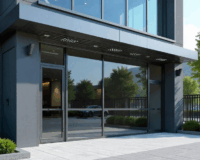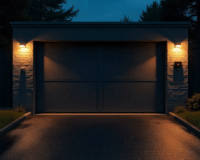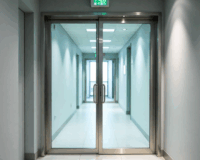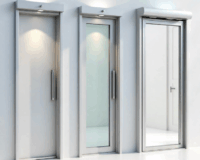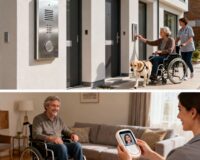Automatic sliding doors have become an essential feature in commercial buildings, corporate offices, hospitals, airports, hotels, retail stores, and increasingly in high-end residential environments. These doors offer a seamless, hands-free entry experience that improves accessibility and elevates the overall modern feel of the space. But to keep an Automatic Sliding Door performing at its peak, consistent maintenance is crucial.
Although these systems are engineered for durability, they still rely on a combination of mechanical, electrical, and software-driven components. Without proper care, the door may experience reduced performance, unnecessary wear, or even safety risks. Regular maintenance not only extends the lifespan of the system but also ensures its smooth, quiet, and safe operation.
This detailed guide explores everything you need to know about maintaining an automatic sliding door for long-term and optimal performance—covering best practices, troubleshooting, and long-term strategies.
Understanding How an Automatic Sliding Door Works
Before diving into maintenance, developing a solid understanding of how automatic sliding doors function is incredibly valuable. These systems operate using several interconnected parts:
Sensor System
The sensor is responsible for detecting movement or presence. Once it senses someone approaching, it signals the motor to activate.
Drive Unit and Motor
This includes the electric motor, gearbox, and the drive belt system. These components work together to open and close the door smoothly.
Electronic Controller
This acts as the “brain” of the system. It receives data from sensors, controls the motor, adjusts speed, and coordinates safety features.
Door Panels and Glass
These are the visible and movable parts of the system, usually composed of durable aluminum frames and tempered or laminated glass.
Track and Rollers
These allow the door panels to glide open and closed. If these parts get dirty or worn, friction increases, causing performance issues.
Safety Sensors and Photo Beams
These ensure that the door does not close on a person or object and are essential for compliance with building safety standards.
Emergency Override Mechanism
This feature ensures the door can still be operated manually in case of power failure.
Each of these elements must work in harmony for the Automatic Sliding Door to function efficiently. Even a slight misalignment of one component can cause operational issues, which is why maintenance is essential.
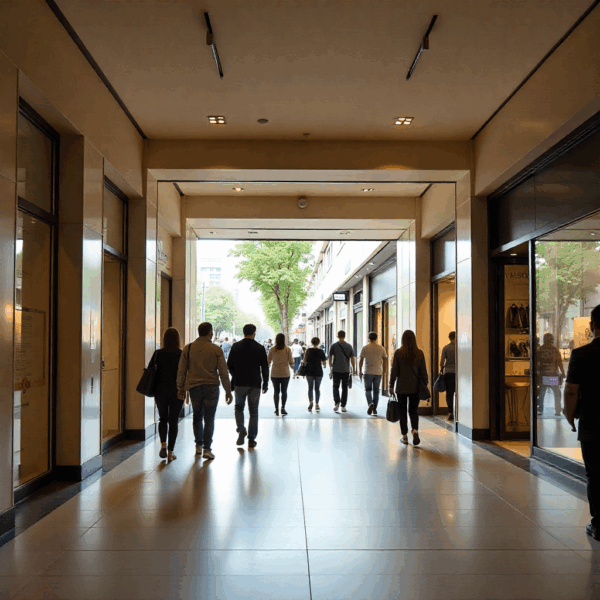
The Importance of Proper Maintenance
Maintaining an automatic sliding door is essential for several reasons:
Ensuring User Safety
A malfunctioning door can pose a safety hazard. If sensors fail to detect a person or object, the door may close prematurely. Regular maintenance ensures all safety protocols work as intended.
Extending the System’s Lifespan
Like any machine, an automatic sliding door experiences wear and tear. However, with proper care, the lifespan of the motor, rollers, and control systems can be significantly extended.
Reducing Operating Costs
A poorly maintained system consumes more energy, breaks down more frequently, and requires expensive components to be replaced. Prevention is always cheaper than repair.
Improving Overall Performance
A well-maintained door operates quietly, responds quickly, and provides a smooth user experience—critical for high-traffic environments such as malls, clinics, and airports.
Avoiding Downtime
Businesses rely on seamless access for customers, staff, and patients. A malfunctioning door can interrupt operations, cause foot traffic congestion, or even force temporary closures.
By understanding the importance of system maintenance, facility owners and building managers can take proactive steps to protect their investment and ensure reliable performance.
Best Practices for Maintaining Automatic Sliding Doors
Maintaining an Automatic Sliding Door involves both simple day-to-day tasks and more thorough scheduled maintenance checks. Implement the following strategies to maximize performance and efficiency.
Regular Cleaning of Tracks and Door Panels
One of the most fundamental—yet most overlooked—maintenance steps is simple cleaning. Dirt, dust, and debris naturally accumulate over time, especially in high-traffic locations. If the tracks become obstructed, the door may move unevenly or require more effort from the motor.
How to Clean Properly
-
Use a brush or small vacuum to remove dirt from the tracks.
-
Wipe the tracks with a damp cloth to remove fine dust.
-
Avoid using heavy grease, which attracts more dirt and creates buildup.
-
Clean the glass panels using a non-corrosive cleaner to maintain aesthetics.
-
Make sure to clean motion and safety sensors to prevent detection errors.
A clean track reduces friction and ensures effortless movement, while clean sensors ensure correct operation.
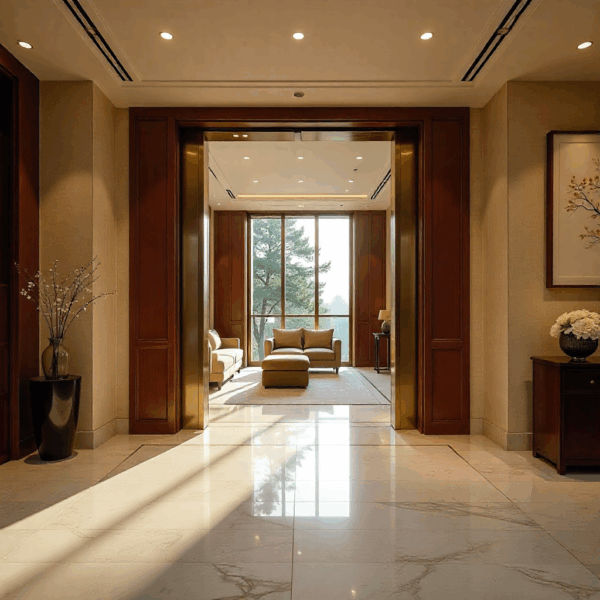
Lubrication of Moving Parts
Mechanical parts require proper lubrication to reduce friction and extend their longevity. Components such as rollers, hinges, and the drive system work best when lightly lubricated.
Recommended Lubrication Tips
-
Use silicone-based lubricants, not oil-based products.
-
Avoid over-lubricating, as excess oil can drip onto the track and attract dirt.
-
Focus lubrication on rollers, bearings, and moving joints.
-
Check for wear on the belt and drive system while lubricating.
Proper lubrication keeps the system running smoothly while reducing the stress placed on the motor.
Testing and Calibrating Sensors
Sensors play a vital role in the safety and responsiveness of automatic sliding doors. Misaligned or malfunctioning sensors can cause delays or safety hazards.
How to Test Sensors Effectively
-
Walk slowly toward the door to test motion detection sensitivity.
-
Block the closing path to test whether safety sensors stop the door.
-
Ensure sensors are free from dust, fingerprints, or spider webs.
-
Make sure that motion sensors are angled correctly, pointing toward the correct detection zone.
A properly calibrated sensor ensures that the system reacts at the right distance and speed, improving both convenience and safety.

Checking Door Alignment and Structural Integrity
Door misalignment is one of the most common issues faced by automatic sliding doors. Over time, continuous use and environmental factors may cause the door panel to shift, leading to uneven movement or scraping noises.
Alignment Maintenance Includes:
-
Inspecting roller wheels for signs of wear.
-
Checking whether the door glides evenly from end to end.
-
Listening for unusual noises during operation.
-
Adjusting the alignment based on manufacturer guidelines.
A misaligned door increases friction, strains the motor, and leads to premature wear, making regular alignment checks crucial.
Inspecting the Motor and Drive Unit
The motor is the most critical part of an Automatic Sliding Door, as it controls all movement. This unit must operate smoothly to avoid system breakdowns.
Key Areas to Inspect:
-
Check for overheating or unusual smells.
-
Listen for grinding or humming noises that may indicate gear damage.
-
Ensure all wiring connections are secure.
-
Evaluate drive belt tension to ensure proper operation.
-
Inspect the gearbox for wear.
Any abnormalities should be addressed immediately, preferably by a professional technician to avoid voiding warranties or causing electrical hazards.
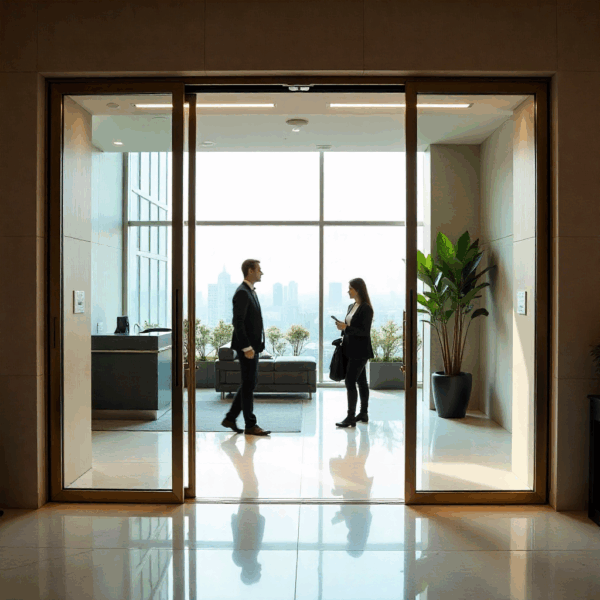
Reviewing Control Panel and Software Settings
Modern sliding doors include software-driven controllers that allow you to adjust movement speed, sensitivity, open time, and closing delay.
Important Parameters to Monitor:
-
Opening and closing speed
-
Sensor sensitivity
-
Hold-open time
-
Anti-pinch safety functions
-
Error messages or diagnostic indicators
Adjusting these settings can significantly improve performance, reduce energy use, and enhance safety.
Monitoring Battery Backup and Power Systems
During power outages, some automatic sliding doors include battery backup systems or emergency opening modes.
What to Look For:
-
Check battery health and charge capacity.
-
Inspect the connectors for corrosion.
-
Test the emergency manual mode.
-
Ensure compliance with building evacuation procedures.
A reliable emergency system ensures that people can safely exit the building even when the power is down.

Daily, Monthly, and Annual Maintenance Routine
A structured routine ensures consistent long-term performance. Here’s a recommended approach for managing the care of an Automatic Sliding Door system.
Daily Maintenance Checklist
-
Check for debris on the track.
-
Observe door movement throughout the day.
-
Ensure sensors are responding correctly.
-
Listen for unusual sounds.
Monthly Maintenance Checklist
-
Clean and lubricate moving parts.
-
Inspect door alignment.
-
Check the tightness of screws, nuts, and mounting brackets.
-
Clean sensors and test their performance.
Annual Maintenance Checklist (Professional Recommended)
-
Conduct a full diagnostic test of the system.
-
Replace any worn mechanical components.
-
Test the motor, sensors, and power system.
-
Update firmware or software settings.
-
Perform compliance tests related to safety standards.
Annual professional servicing ensures that all the internal components remain in optimal condition and that the system complies with international safety requirements.
Troubleshooting Common Automatic Sliding Door Problems
Even with regular maintenance, certain problems may occur due to environmental factors, heavy usage, or aging components. Understanding early warning signs helps prevent major breakdowns.
Door Fails to Open Automatically
Common causes include power supply issues, dirty sensors, or faulty wiring. Start by cleaning the sensors and checking the power source.
Door Moves Slowly or Unevenly
This often indicates debris in the track, misaligned panels, or worn rollers. Cleaning and alignment typically solve the issue.
Door Stays Open Constantly
If the door refuses to close, the motion sensor may be detecting an object or malfunctioning. Adjusting the sensor angle or replacing defective sensors can help.
Unusual Noises During Operation
Grinding, rattling, or squeaking sounds may indicate roller damage, motor wear, or loose components. Inspect and lubricate components or replace worn-out parts. Recognizing these symptoms early prevents costly repairs and improves user safety.

How to Increase the Lifespan of Your Automatic Sliding Door
Regular maintenance is just one part of achieving long-term performance. Additional best practices include:
Avoid Manual Force
Never push or pull the door while it is operating. Manual force strains the motor and drive system.
Train Staff and Users
Employees should know how to interact with the door correctly and avoid blocking sensors.
Limit Unnecessary Traffic Flow
In environments with extremely heavy foot traffic, installing double-door systems or using access control features can reduce strain.
Use Only High-Quality Replacement Parts
Cheap parts may fail prematurely or affect system performance. Always use manufacturer-approved components.
Control Environmental Factors
Dusty, humid, or windy environments require more frequent maintenance. Installing wind barriers or air curtains can reduce strain on sensors.
When Replacement is Better Than Repair
While maintenance can significantly extend an Automatic Sliding Door’s life, replacement becomes necessary when:
-
Repair costs exceed half the cost of a new system
-
The door frequently breaks down
-
The automation system is over 10–15 years old
-
Spare parts are no longer available
-
The door fails to meet updated safety regulations
Modern systems offer improved efficiency, enhanced security features, updated software, and quieter operation—making replacement a smart long-term investment.
Ready to Upgrade or Maintain Your Automatic Sliding Door?
Maximize the performance, safety, and lifespan of your automatic sliding doors with professional maintenance or a system upgrade. Whether you need routine servicing, new sensors, high-efficiency door operators, or full replacement units, the right solution will keep your building operating smoothly and safely.
👉 Explore our complete range of automated door solutions here:
https://digitalhomesystems.com.au/automated-door-solutions-for-buildings/
Conclusion
A well-maintained Automatic Sliding Door provides unmatched convenience, safety, and operational efficiency in any building. By following consistent maintenance practices—such as cleaning tracks, testing sensors, lubricating moving parts, and scheduling regular professional servicing—you can ensure your system remains reliable for many years.
Proper care reduces repair costs, prevents unexpected downtime, and keeps your building operating smoothly, whether you’re running a hospital, hotel, retail store, or office. With a structured maintenance plan and timely troubleshooting, your automatic sliding door will deliver optimal performance and maximum value throughout its lifespan.
Invest in long-term safety and performance—purchase certified Automatic Sliding Door products from trusted experts.


